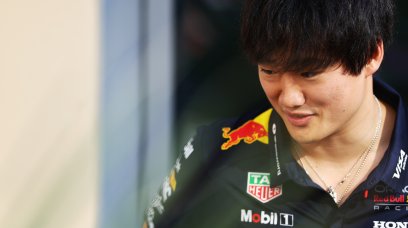Last weekend the Baku track showed a clear recovery of the SF-23, which is now capable of generating performances, at least on a single qualifying lap, comparable to those of the Red Bull RB19. Meanwhile, the race pace, especially with high fuel load, was incomparable between the two cars. For Ferrari at the end of the race, on one hand there was satisfaction at claiming their first podium of the season, but at the same time it could be perceived that there was a certain regret with a less than perfect setup, not helped by just the one free practice session held on Friday. In fact, it seems that although the setup chosen was the one linked to precise front end corner entry, some adjustments could have been different, favouring in this case a reduction in tyre degradation, the true Achilles' heel of this car. With this conviction and with the arrival of some aerodynamic innovations planned for this weekend in Miami, confirmed by Fred Vasseur after the race in Baku, Ferrari enters the race in Florida trying to confirm itself as the second force among the teams. Article continues below image.
It is true that Aston Martin did not find an adequate balance for the car in Baku, which negatively influenced the performance of the AMR23, but the Miami track should, in this sense, be better-suited to the single-seater of Fernando Alonso and Lance Stroll. Nonetheless, the developments, which should be introduced on the SF-23, mainly around the diffuser area, in addition to the new rear wings - characterised by the return to the single support pylon, and with a medium load profile (see below) - could be functional for a better balance. The new diffuser (see above) was actually already ready in time for Baku, but was not introduced due to the unique characteristics of the Azerbaijan circuit. The new version should be less affected by changes in ground clearance. It seems correct to also note the non-marginal effect that the resurfaced Miami track - with a bitumen with a less pronounced roughness than that adopted last year - has on the degradation of the tyres. The SF-23 could therefore, despite the less favourable track layout compared to that of Baku, maintain the positive trend in terms of performance extracted from the current car configuration, before the introduction of the more substantial development package, at Imola. The behaviour of the SF-23, in terms of driving, has become more predictable than in Bahrain and Saudi Arabia. This is important because it has not only allowed, at least to Leclerc, to have greater confidence in terms of front end consistency, crucial for pushing to the max, but also helped to verify the directions taken with regards to aerodynamic and suspension adjustments. This could therefore be the starting point on which to build Ferrari's recovery.
In Baku, the McLaren MCL60 driven by Lando Norris and Oscar Piastri adopted a new floor, which featured a revised edge design. The previous design last seen in Melbourne was characterised by a slit that separated the front portion, where there is the expanding profile that highlights the final portion of the diverting profiles under the floor, and sections it in front of the rear wheels. The new design, however, has lost the longitudinal slit that separated the external profile from the innermost portion of the floor, effectively adopting a side edge design similar to the one that was briefly tested in FP1 in Abu Dhabi last year. In fact, this version also includes the horizontal separating profile which energises the flow in the area in front of the rear wheels. It is difficult to evaluate, especially due to the peculiarities of the Azerbaijan circuit layout, the extent of the benefits of this solution. A more precise analysis can already be carried out during this weekend in Miami.
Most read






